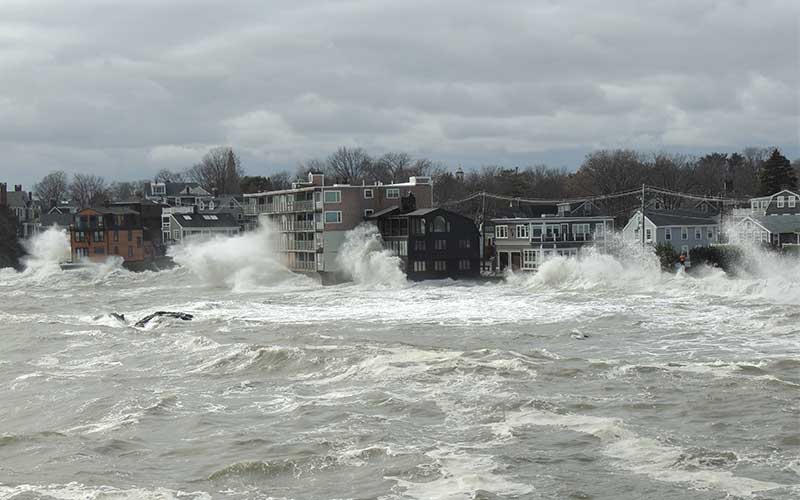Rising Rainfall Amounts In Western Massachusetts Due To Climate Change

Table of Contents
The Scientific Evidence for Increased Rainfall in Western Massachusetts
Climate models and observed precipitation data paint a clear picture: Western Massachusetts is experiencing a substantial increase in rainfall. This isn't simply anecdotal; it's supported by robust scientific evidence.
-
Data-Driven Proof: Analysis of precipitation data from the National Oceanic and Atmospheric Administration (NOAA) and the United States Geological Survey (USGS) reveals a clear upward trend in total rainfall and the intensity of individual rainfall events over the past several decades. These increases are statistically significant and cannot be attributed to natural variability alone.
-
Climate Model Projections: Sophisticated climate models consistently predict further increases in precipitation for Western Massachusetts throughout the 21st century. These projections incorporate various factors, including greenhouse gas emissions and their impact on global weather patterns. The models suggest that not only will total rainfall increase, but the frequency of extreme rainfall events will also rise significantly.
-
The Intensified Hydrological Cycle: Warmer temperatures, a direct consequence of climate change, are intensifying the hydrological cycle. Higher temperatures lead to increased evaporation from land and water surfaces, resulting in more atmospheric moisture. This excess moisture translates to heavier rainfall events when weather systems converge.
-
Shifting Weather Patterns: Changes in atmospheric circulation patterns are also contributing to the increased rainfall in Western Massachusetts. The jet stream, a major driver of weather systems, is exhibiting increased variability, leading to more frequent and intense storms that bring significant precipitation to the region.
Impacts of Rising Rainfall on Western Massachusetts Communities
The consequences of rising rainfall amounts are widespread and profound, affecting various aspects of life in Western Massachusetts.
-
Increased Flooding: The most immediate and visible impact is the increased frequency and severity of flooding events. Rivers and streams overflow their banks more readily, inundating low-lying areas and causing significant damage to homes and businesses.
-
Infrastructure Damage: Roads, bridges, culverts, and other crucial infrastructure are struggling to cope with the increased volume of water. Repeated flooding leads to erosion, damage, and costly repairs, impacting transportation and public services.
-
Economic Consequences: The economic fallout from flooding and infrastructure damage is substantial. Property damage, business disruptions, and the cost of repairs place a significant strain on local economies and taxpayers. Agricultural losses due to waterlogged fields further exacerbate these economic challenges.
-
Public Health Risks: Flooding creates breeding grounds for mosquitoes and other disease vectors, increasing the risk of waterborne illnesses. Contaminated floodwaters can also pose risks to human health through exposure to hazardous materials.
-
Ecosystem Disruption: Increased rainfall alters the delicate balance of local ecosystems. Changes in water flow can harm aquatic life, while prolonged periods of saturation can damage forests and wetlands.
Mitigation and Adaptation Strategies for Western Massachusetts
Addressing the challenges posed by rising rainfall requires a comprehensive strategy encompassing both mitigation (reducing the causes) and adaptation (adjusting to the impacts).
-
Flood Control Improvements: Investing in upgraded drainage systems, constructing flood barriers, and restoring natural floodplains can significantly reduce the risk of flooding in vulnerable areas. This includes improving stormwater management infrastructure in urban areas.
-
Infrastructure Upgrades: Roads, bridges, and other infrastructure must be designed and built to withstand more frequent and intense rainfall events. This requires robust materials and innovative engineering solutions.
-
Sustainable Land Management: Implementing sustainable land management practices, such as reforestation and the creation of green spaces, can reduce runoff and mitigate the impact of heavy rainfall. This includes promoting responsible development practices to minimize impervious surfaces.
-
Advanced Water Management: Investing in advanced water management technologies, such as improved water storage and distribution systems, can help the region cope with increased precipitation. This might involve exploring water harvesting and greywater reuse techniques.
-
Community Resilience Building: Preparing communities for extreme weather events through public education, early warning systems, and evacuation plans is crucial for minimizing the impact of flooding.
-
Regional and National Climate Action: Participation in regional and national climate action plans is vital for mitigating the root causes of climate change, thereby reducing the frequency and intensity of extreme rainfall events.
The Role of Individual Actions in Addressing Rising Rainfall
While large-scale initiatives are essential, individual actions also play a crucial role in mitigating the impacts of rising rainfall.
-
Water Conservation: Conserving water at home reduces the strain on water resources during periods of heavy rainfall and reduces the overall demand.
-
Sustainable Living Practices: Adopting sustainable living practices, such as reducing energy consumption and choosing environmentally friendly products, contributes to a wider effort to mitigate climate change.
-
Community Involvement: Participating in local climate action initiatives and advocating for policy changes focused on climate resilience strengthens community-wide efforts.
-
Climate Advocacy: Raising awareness about the issue of rising rainfall and advocating for effective climate policies at the local and national levels is crucial.
Conclusion
Rising rainfall amounts in Western Massachusetts are a clear and present consequence of climate change, with significant impacts on the region's communities and infrastructure. Addressing this challenge requires a multi-pronged approach that includes robust mitigation and adaptation strategies at both the individual and community levels. From upgrading infrastructure to promoting sustainable land management and fostering community resilience, the path forward demands collaborative effort and proactive action.
Call to Action: Learn more about the effects of rising rainfall in Western Massachusetts and discover how you can contribute to mitigation and adaptation efforts. Take action to combat climate change and protect our community from the increasing threats of increased precipitation. Get involved in local initiatives focused on mitigating the impacts of rising rainfall in Western Massachusetts. Your participation is vital in building a more resilient and sustainable future for our region.

Featured Posts
-
 Opening Day Baseball A New Book Review
May 28, 2025
Opening Day Baseball A New Book Review
May 28, 2025 -
 Futbol Sueperstari Cristiano Ronaldo Nun Ticari Imparatorlugu
May 28, 2025
Futbol Sueperstari Cristiano Ronaldo Nun Ticari Imparatorlugu
May 28, 2025 -
 Arsenal Transfer News Arteta And Edu Eye Record Breaking Striker Signing
May 28, 2025
Arsenal Transfer News Arteta And Edu Eye Record Breaking Striker Signing
May 28, 2025 -
 Informasi Penerbangan Saudia Layani Rute Bali Jeddah
May 28, 2025
Informasi Penerbangan Saudia Layani Rute Bali Jeddah
May 28, 2025 -
 One Piece The Shifting Sands Of Loyalty Pirates Who Changed Crews
May 28, 2025
One Piece The Shifting Sands Of Loyalty Pirates Who Changed Crews
May 28, 2025
Latest Posts
-
 Auction Alert Banksys Broken Heart Artwork To Be Sold
May 31, 2025
Auction Alert Banksys Broken Heart Artwork To Be Sold
May 31, 2025 -
 Rare Banksy Artwork Broken Heart Goes To Auction
May 31, 2025
Rare Banksy Artwork Broken Heart Goes To Auction
May 31, 2025 -
 Auction Preview Banksys Broken Heart Artwork
May 31, 2025
Auction Preview Banksys Broken Heart Artwork
May 31, 2025 -
 Banksy Auction Iconic Broken Heart Wall To Be Sold
May 31, 2025
Banksy Auction Iconic Broken Heart Wall To Be Sold
May 31, 2025 -
 Banksys Broken Heart Mural Heads To Auction
May 31, 2025
Banksys Broken Heart Mural Heads To Auction
May 31, 2025
